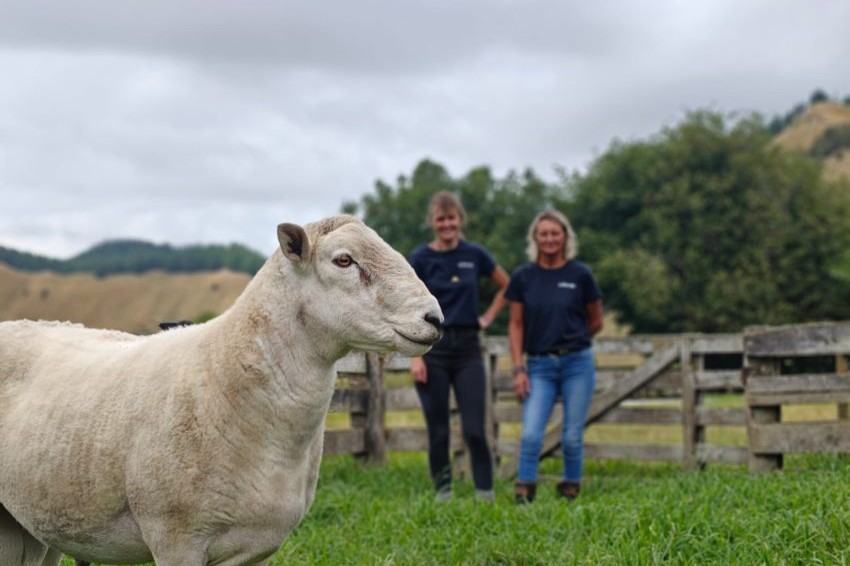Pothole downgrades prediction
Based on Beef + Lamb New Zealand’s October prediction, farmers expected 2022/23 to be a reasonable year but lamb hit a pothole and mutton prices choked.

Based on Beef + Lamb New Zealand’s October prediction, farmers expected 2022/23 to be a reasonable year but lamb hit a pothole and mutton prices choked. By Joanna Grigg.
The Beef + Lamb NZ Mid-season Update (released March) has taken this pothole on board and downgraded forecast revenue and net profit for the average sheep and beef business for 2022/23. Gross revenue is forecast to average $678,000, down 6.4% on last year and within this, the sheep meat contribution looks to be 14% lower. This is at a US dollar value of NZ$0.63.
In October it was all smiles as the forecast was for the average lamb farm gate price to be 815c/kg. By March the updated forecast had shaved 55 cents off this – to 7.60c/kg.
Initial forecasts picked mutton prices to slide 3.1% on the previous year, to 519c/kg in the 2022/23 season. But by March this forecast was shot to pieces. The updated annual average mutton farm gate price for the 2022/23 season is now forecast at $4.30/kg, down 23% on 2021/22, and 11% below the five-year average.
What was forecast to be $181,000 farm profit before tax is now looking more like $96,600. This is a 35% decrease on 2021/22 and below the 10-year average.
There is not much in the kitty to pay tax, feed the family, or for unexpected costs like cyclone damage or drought. Even conservative budgeters are feeling a bit short-changed, given that high hopes for Christmas goodies never eventuated. Farmers exposed to early summer markets were especially impacted. Farms top heavy in sheep, generally those in Southland/Otago, will feel the missing revenue acutely.

Forecast revision
Beef + Lamb NZ (B+LNZ) chief economist Andrew Burtt said things did come back more than expected and forecasts have been revised accordingly.
“A key reason is that China’s Covid relaxation took longer than expected.”
The B+LNZ Update also mentioned a hangover effect, from a slow processing winter. The number of lambs processed in the first four months of 2022/23 was similar to that in the previous season.
In the North Island, lamb processing started strongly as there were carry over lambs from the winter, but tapered off to be behind as more grass was available, which allowed farmers to hold on to lambs longer.
The South Island dry saw lambs continue to flow in, lamb processing get ahead of the five-year average and a drop in farm gate price.
One upside might be the chance of a good rebound, mirroring the fall off. B+LNZ is pitching the farm gate price for lamb to be $7.60/kg CW average, for 2022/23. With only three-and-a-bit months to roll, this suggests B+LNZ is optimistic the year to June will finish strongly, given the schedule was well below this in early March. Burtt agrees in theory.
Statistically, the end of season months would have to be higher than $7.60/ kg CW if the current price was tracking below this, to make the average, he said.
Overall, the view from the top is that market fundamentals for NZ lamb and mutton exports are looking positive for the remainder of the 2022/23 season, despite the weak start. This is small consolation for those selling in the first half of the season.
The Meat Industry Association reported that meat exports in January 2023 were “slow”, with total export values down by 7% compared to January 2022. A total of 36,496 tonnes of sheep meat was exported globally, an increase of 18% by volume, but a drop in value of 5% to $343 million.
Burtt said there was still a lot of lamb to be sold but volume looked to be similar to last season. Farmers should be aware that the forecast is for farmgate prices, which takes into account all payments to farmers. This can be a bit more than the base advertised schedule price.
Mutton woes were firmly related to China. The value of mutton exports dropped significantly in the season to late February, reflecting weakening Chinese demand. B+LNZ puts this down to China relaxing its Covid restrictions, more people getting sick and not eating out. Adding to this, meat inventories seem to have reached their maximum, meaning reduced demand. Since an overwhelming majority of NZ’s mutton exports are to China, the reduced demand has a significant effect on prices at the farm gate.
The outlook is more positive though. China is expected to get over its pandemic hurdles and consumers are expected to go eat out again. The Update said the “pent-up demand” as shown by elevated savings levels in China will be a motivating factor for consumers.
While beef is the one shining star, it isn’t enough to save the day. For most sheep and beef farms, sheep income drives the bulk of the returns, with beef second.
On the negative side, Burtt said Australia is back with more beef, but positives are that China is back in the market and there is a possible chance of United States cattlemen calling for restrictions of Brazilian beef imports into the US.
Exchange rates could make a 16% difference. The update said a 10% depreciation of the NZ dollar against the US dollar (i.e. from 0.63 to 0.57) and the associated cross rates against the British pound and the Euro, increases the average lamb price received by farmers by 16%. In the 2022/23 season, the value of the NZD is expected to decline against all three currencies.
Weighing up options
Sheep farmers looking to improve revenue before year-end might look to dairy grazing, as revenue is looking to increase here. This category of farm income is usually about 6% of total revenue for the average farm.
“Sheep and beef farmers are thinking carefully about risks from environmental perspectives and charging dairy farmers appropriately,” Burtt said.
Farm costs were always pitched to increase. At the start of the season, expenditure for 2022/23 was estimated by B+LNZ to increase 3.4% to $535,000 for an average farm. This updated forecast is similar (a 4.1% increase), as farmers have to keep a tight lid on costs and look to screw it down even more. Repairs and maintenance are forecast to decrease to an estimated $44,500 per farm in 2022/23. This is only 7% above the five-year average.
Statistics New Zealand reported Q4 2022 costs were +15 higher (year on year) with interest rates up 46%, fuel 36% and fertiliser 28%. Burtt makes the point that farm expenses are made up of both value and volume, so farmers have dropped the volume of purchases to control overall expenses. Fertiliser, lime and seed expenditure is forecast to increase 6.1% to $102,100 per farm.
Burtt said farmers are deferring repairs and maintenance, and fertiliser.
“If you don’t buy the chocolate bar, the high price of chocolate won’t appear in your accounts.”
Interest expenditure is forecast to be 12.5% higher (to $54,000 for an average B+LNZ farm).
“This formula involves looking at our individual farms and seeing what they have fixed and floated, and also debt repayment levels.”
Coming off a high is not a nice feeling, especially where there is uncertainty where it might land. Mutton still had a way to go before it achieved the levels it had in the previous two seasons. Farmers enjoyed record high farm gate profits for sheep meat and beef in 2021/22. Provisional tax following this good year is squeezing cash flow. The B+LNZ Update suggests the tax bill will decrease by 35% from the 2021/22 level.
One surprise has been the reported decrease in sheep numbers, via Statistics NZ December 2022 figures. Breeding ewes were reported to have dropped 6% and hogget numbers lifted 5%.
“We will be very interested in the final May numbers,” Burtt said, adding that the issue seems to be that the ewe decline reported is not reflected in the mutton kill.
“It doesn’t really stack up.”
- The B+LNZ Economic Service will update figures further when final data is released by Statistics NZ in May 2023.




